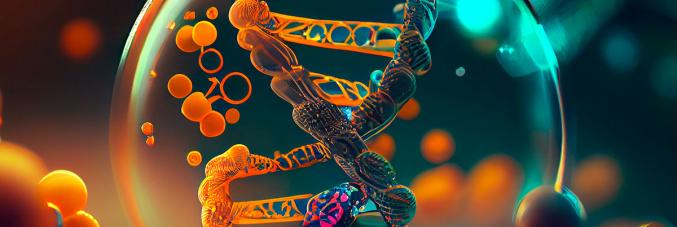
A new method under study to improve recognition between two DNA strands
05.08.2025
Almost all chemical processes, both in nature and in the laboratory, rely on selective recognition between molecules. It is essential for molecular recognition to be selective—an incorrect bond between a substrate and an enzyme or errors in DNA base pairing can lead to diseases. Scientists have long been working to improve molecular recognition in order to enhance performance in strategic areas such as pharmacology, sensing technologies, and materials science.
A research team led by the Universities of Padua and Rome Tor Vergata, in collaboration with Northwestern University in the United States, has published a study in Nature Nanotechnology titled "An information ratchet improves selectivity in molecular recognition under non-equilibrium conditions". The paper presents a new method to improve recognition between two DNA strands and reduce pairing errors.
Chemists have always relied on molecular recognition for the development of catalysts, drugs, sensors, and materials. Typically, the selectivity of this recognition is ensured by the complementarity in the shape and chemical structure of the two molecules. However, in some biological processes, complementarity alone is not enough to guarantee a high level of selectivity.
During DNA replication, for example, each strand must accurately recognize billions of fundamental units, and each mistake can lead to mutations that may cause cancer. To increase fidelity during replication, nature employs various specialized enzymes that carry out kinetic proofreading to detect and correct errors.
“We took inspiration from this natural strategy, and with this new technique—which mimics enzymatic kinetic proofreading—we are able to correct binding errors between short DNA strands,” explain Professors Leonard Prins, from the Department of Chemical Sciences at the University of Padua, and Francesco Ricci, from the Department of Chemical and Technological Sciences at the University of Rome Tor Vergata. “The procedure is based on a mechanism called an information ratchet, which has previously been used to create molecular machines such as motors and pumps. With this process, the selectivity in DNA strand recognition significantly increases—from 67% to 86%. Moreover, unlike kinetic proofreading, this system does not require complex enzymes, as we can act directly and specifically on the DNA itself.”
This discovery opens up new possibilities for designing more efficient catalysts, highly sensitive molecular sensors, and innovative materials. It also offers a new perspective on the origin of life, suggesting—conclude the research coordinators—that primitive molecules may have used similar mechanisms to faithfully transmit genetic information even before the evolution of complex enzymes.



